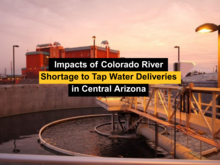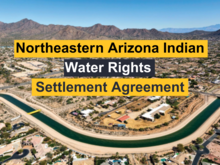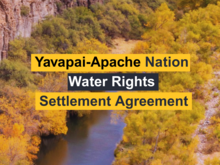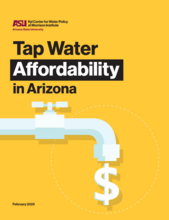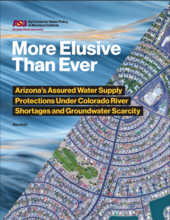
Blogs
Impacts of Colorado River Shortage to Tap Water Deliveries in Central Arizona Explainer | July 2023 This primer provides information regarding Colorado River shortage impacts to the provision of tap water. The intent of this primer is to: |
Untangling Housing Affordability & Groundwater Regulation Explainer | July 2023 In order to ensure sufficient groundwater to meet projected demand, the state of Arizona has imposed limitations on new subdivisions in Greater Phoenix. At the same time, the Phoenix area faces serious housing affordability challenges. How will the new limits on development impact affordable housing and what steps can area cities take to mitigate those impacts? |
Yavapai-Apache Nation Water Rights Settlement Agreement - Explainer Explainer | January 2025 The Yavapai-Apache Nation Water Rights Settlement Agreement is a landmark agreement that resolves the Nation's longstanding water rights claims in the Verde River watershed. This explainer explores key aspects of the agreement. |
Floating Pools & Grand Bargains Negotiations over the future of the Colorado River hinge on a bold new idea: Floating Pools — reserved water storage designed to reduce conflict and avoid litigation between Upper and Lower Basin states. This report explores how this innovative concept could lay the foundation for a durable, post-2026 management framework for the river. |
Water Research Publications (Kyl) The Kyl Center for Water Policy at Morrison Institute regularly publishes research to inform water policy planning and decision-making |
Kathleen Ferris Kathleen Ferris has been involved in Arizona water issues for nearly 40 years. In 1977, she was appointed executive director of the Arizona Groundwater Management Study Commission, leading to the passage of the 1980 Arizona Groundwater Management Act, one of the nation’s most visionary groundwater laws. |
Grant Heminger Grant Heminger is a Research and Policy Analyst at the Kyl Center for Water Policy, specializing in water affordability and demand projection with a focus on tribal water systems. He graduated summa cum laude from Arizona State University's Barrett, The Honors College, where he studied under esteemed professors of practice with decades of experience in water resource management. |
